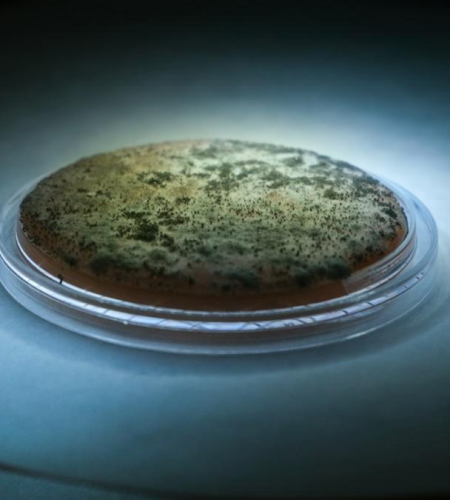Mold is a silent intruder that can thrive in the hidden corners of homes and offices, often unnoticed until it becomes a significant health or structural concern. While not all molds are harmful, certain types produce toxins (mycotoxins) that can pose serious health risks and damage indoor environments. Understanding the most common types of toxic mold, their characteristics, and how to identify and address them is crucial for maintaining a safe and healthy living or working space. This guide explores the most prevalent toxic molds found in homes and offices, their potential dangers, and practical steps for prevention and remediation.
Why Toxic Mold Matters
Mold is a type of fungus that grows in damp, humid, or poorly ventilated areas. It reproduces by releasing spores into the air, which can settle on surfaces and grow under the right conditions. Toxic molds are particularly concerning because they produce mycotoxins—chemical compounds that can cause adverse health effects in humans and animals. Symptoms of toxic black mold exposure range from mild allergic reactions (sneezing, runny nose, or skin irritation) to severe respiratory issues, neurological symptoms, or immune system suppression, depending on the mold type and exposure level.
Homes and offices are particularly susceptible to mold growth due to factors like water leaks, poor ventilation, high humidity, or flooding. Identifying and addressing toxic mold promptly is essential to protect occupants’ health and prevent costly structural damage.
The Most Common Types of Toxic Mold
Below are the most common types of toxic mold found in indoor environments, along with their characteristics, health risks, and typical habitats.
1. Stachybotrys chartarum (Black Mold)
Appearance: Often referred to as “black mold,” Stachybotrys chartarum is dark green or black, with a slimy, wet texture when actively growing. It may appear powdery when dry.
Where It’s Found: This mold thrives in areas with prolonged moisture, such as water-damaged walls, ceilings, carpets, or drywall. It commonly grows on materials high in cellulose, like wood, paper, or insulation, after flooding or leaks.
Health Risks: Stachybotrys is one of the most notorious toxic molds due to its production of mycotoxins called satratoxins. Exposure can cause respiratory issues, chronic fatigue, headaches, skin irritation, and, in severe cases, neurological or immune system problems. It is particularly harmful to infants, the elderly, and individuals with compromised immune systems.
Identification Tips: Look for dark, patchy growth in areas with persistent dampness, often accompanied by a musty odor. Professional testing is recommended, because not all toxic black mold is Stachybotrys.
2. Aspergillus
Appearance: Aspergillus species vary in color, appearing green, yellow, white, or black, often with a powdery or fuzzy texture.
Where It’s Found: Common in homes and offices, Aspergillus grows on a wide range of surfaces, including walls, fabrics, HVAC systems, and food. It thrives in warm, humid environments and can spread rapidly through airborne spores.
Health Risks: Some Aspergillus species, such as Aspergillus fumigatus or Aspergillus flavus, produce mycotoxins like aflatoxins, which are highly toxic and carcinogenic. Inhalation of spores can lead to allergic reactions, asthma attacks, or aspergillosis—a serious lung infection—especially in immunocompromised individuals.
Identification Tips: Check for powdery patches in poorly ventilated areas, such as basements, bathrooms, or air conditioning units. A professional mold test can confirm the species, as Aspergillus is diverse and not all strains are toxic.
3. Penicillium
Appearance: Penicillium typically appears blue, green, or white with a velvety or powdery texture. It often forms circular patches.
Where It’s Found: This mold is common in water-damaged buildings, growing on carpets, wallpaper, insulation, and mattresses. It also thrives in damp basements and on spoiled food.
Health Risks: While Penicillium is the source of the antibiotic penicillin, certain species produce mycotoxins that can cause allergic reactions, asthma, or respiratory irritation. Prolonged exposure may lead to chronic sinus infections or hypersensitivity pneumonitis.
Identification Tips: Look for blue-green patches with a musty smell, especially in areas with water damage or high humidity. It often grows alongside other molds, making professional identification helpful.
4. Cladosporium
Appearance: Cladosporium appears as dark green, brown, or black spots with a suede-like or powdery texture.
Where It’s Found: This mold is highly adaptable and can grow in both warm and cool environments. It’s commonly found on fabrics, carpets, wood, and HVAC filters. It also grows on damp windowsills or in bathrooms.
Health Risks: While less toxic than Stachybotrys or Aspergillus, Cladosporium can trigger allergic reactions, asthma, and skin or eye irritation. In rare cases, it may cause infections in immunocompromised individuals.
Identification Tips: Look for small, dark spots in damp or poorly ventilated areas. It often grows in small colonies and may be mistaken for dirt or soot.
5. Chaetomium
Appearance: Chaetomium starts as white or grayish mold but darkens to black or olive-green over time. It has a cottony or fuzzy texture.
Where It’s Found: Commonly found in water-damaged buildings, particularly on drywall, wood, or carpets. It thrives in areas with chronic moisture, such as after flooding or plumbing leaks.
Health Risks: Chaetomium produces mycotoxins that can cause respiratory issues, skin irritation, and, in rare cases, neurological symptoms. It is also associated with a strong musty odor that can indicate its presence.
Identification Tips: Look for fuzzy, discolored patches in areas with a history of water damage. Its distinctive musty smell is a key indicator, but lab testing is needed for confirmation.
6. Fusarium
Appearance: Fusarium appears pink, white, or reddish with a cottony or slimy texture.
Where It’s Found: This mold prefers cooler, wet environments and is often found in basements, bathrooms, or areas with water leaks. It can also grow on plants, carpets, or fabrics.
Health Risks: Fusarium produces mycotoxins like fumonisins, which can cause allergic reactions, respiratory problems, or, in severe cases, neurological issues. It is particularly harmful to individuals with weakened immune systems.
Identification Tips: Check for pinkish or reddish growth in damp, cool areas. Its ability to grow at lower temperatures sets it apart from other molds.
The Health Risks of Toxic Mold Exposure
The health effects of toxic mold exposure vary depending on the mold type, exposure duration, and individual susceptibility. Common symptoms include:
Allergic Reactions: Sneezing, coughing, watery eyes, or skin rashes.
Respiratory Issues: Wheezing, asthma exacerbation, or difficulty breathing.
Neurological Symptoms: Headaches, fatigue, difficulty concentrating, or memory issues.
Immune System Effects: Increased susceptibility to infections or chronic fatigue in severe cases.
Those most at risk include children, the elderly, pregnant women, and individuals with asthma, allergies, or compromised immune systems. Prolonged exposure to high levels of mycotoxins can lead to more severe conditions, such as mycotoxicosis or chronic inflammatory response syndrome (CIRS).
How to Identify Toxic Mold in Homes and Offices
Identifying toxic mold requires vigilance and, often, professional assistance. Here are some steps to detect mold:
1. Visual Inspection: Look for discolored patches, fuzzy growth, or water stains on walls, ceilings, carpets, or furniture. Pay attention to hidden areas like behind furniture, under carpets, or in HVAC systems.
2. Smell Test: A musty, earthy odor is a common sign of mold, even if it’s not visible.
3. Moisture Check: Use a moisture meter to detect damp areas where mold is likely to grow.
4. Professional Testing: If mold is suspected, hire a certified mold inspector to take air or surface samples. Lab analysis can identify the mold species and assess its toxicity.
Note that not all molds are visible, as some grow inside walls or under flooring. If you suspect hidden mold, professional testing is essential.
Mold Prevention and Remediation Strategies
Preventing and addressing toxic mold requires a proactive approach to moisture control and regular maintenance. Here are practical steps:
Prevention
Control Humidity: Keep indoor humidity below 50% using dehumidifiers or air conditioners. Monitor levels with a hygrometer.
Improve Ventilation: Use exhaust fans in bathrooms and kitchens, and ensure
proper airflow in basements and attics.
Fix Leaks Promptly: Repair plumbing leaks, roof leaks, or water seepage immediately to prevent moisture buildup.
Regular Inspections: Check for signs of water damage or mold growth in high-risk areas like basements, bathrooms, and HVAC systems.
Use Mold-Resistant Materials: In areas prone to moisture, use mold-resistant drywall, paint, or insulation.
Remediation
Small Areas (Less than 10 Square Feet): For minor mold growth, clean the area with a mixture of water and detergent or a commercial mold cleaner. Wear protective gear (gloves, mask, goggles) to avoid exposure.
Large Areas or Toxic Molds: For extensive mold growth or suspected toxic molds like Stachybotrys, hire a professional mold remediation company. They have the equipment and expertise to safely remove mold and address underlying moisture issues.
Address the Source: Identify and fix the source of moisture (e.g., leaks, poor ventilation) to prevent recurrence.
Dispose of Contaminated Materials: Porous materials like carpets, drywall, or insulation that are heavily contaminated may need to be removed and replaced.
Air Purification: Use HEPA air purifiers to capture airborne mold spores during and after remediation.
When to Seek Professional Help
If you suspect toxic black mold in your home or office, especially if health symptoms are present or the affected area is large, consult a professional mold inspector or remediation specialist. They can:
- Conduct thorough inspections and lab testing to identify mold types.
- Safely remove mold without spreading spores.
- Provide guidance on preventing future mold growth.
Look for certified professionals from organizations like the Institute of Inspection, Cleaning and Restoration Certification (IICRC) or the National Organization of Remediators and Mold Inspectors (NORMI).
Staying Safe from Toxic Molds
Toxic molds like Stachybotrys, Aspergillus, Penicillium, Cladosporium, Chaetomium, and Fusarium are common in homes and offices, thriving in damp, poorly ventilated environments. These molds pose health risks ranging from allergies to severe respiratory or neurological issues, making early detection and prevention critical. By controlling moisture, improving ventilation, and addressing water damage promptly, you can reduce the risk of mold growth. If toxic mold is suspected, professional mold testing and remediation are often necessary to ensure a safe and healthy indoor environment.
For more information on maintaining a healthy home or office, explore additional mold resources. Stay proactive, stay informed, and keep your spaces free from toxic mold growth – always.

